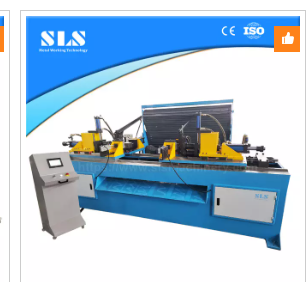Understanding the Mechanics of a Cold Saw
Cold saws are power tools renowned for their precision and cleanliness in cutting metal. Unlike abrasive saws that grind through metal, causing significant heat and burr, a cold saw uses a toothed blade to transfer the heat generated during cutting to the chips created by the blade, leaving the blade and the material cool. This is pivotal in maintaining the integrity of the metal's composition during cuts.
The Distinctive Advantages of Using a Cold Saw
Accuracy and Clean Cuts Are Guaranteed
One of the standout features of a cold saw is its ability to produce exceptionally accurate and clean cuts. The saw operates at a relatively low RPM (revolutions per minute) — typically between 20 and 100 RPM, depending on the material and the diameter of the blade. This slower speed, combined with a well-designed feed rate, minimizes the heat affected zone (HAZ) on the metal, resulting in cuts that are not only precise but also do not require additional finishing or treatment.
Noise Reduction and Enhanced Safety
Cold saws come with substantial benefits in terms of operational safety and noise level. Since these machines operate at lower speeds and are built with robust components, they produce significantly less noise compared to other high-speed metal cutting tools. The inherent design also includes various safety features that protect the operator from metal shards and the moving blade.
Key Considerations When Choosing a Cold Saw
Blade Material and Size Matter
The choice of blade for a cold saw is critical and depends on the type of metal you need to cut. Blades typically range from 8 inches to 14 inches in diameter and are made from either high-speed steel (HSS) or tungsten carbide. The latter is more suited for tougher metals or for applications requiring extended blade life due to its higher resistance to wear.
Efficiency and Operational Cost
Using a cold saw translates to increased efficiency in metal fabrication tasks. They require less power to operate effectively — generally between 1.5 to 4 kW — which keeps energy consumption and operational costs low. Additionally, the durability of the blades and the machine's overall design reduce downtime for maintenance, pushing productivity higher without compromising the quality of the output.
Industry Applications of a Cold Saw
Versatility Across Various Industries
A cold saw machine is a versatile tool used in various industries, from automotive manufacturing to furniture production and plumbing. Its ability to deliver clean, precise cuts makes it a preferred choice in environments where the quality of the cut has a direct impact on the final product.
Investment Considerations
The initial investment in a cold saw is justified by its long-term benefits. Not only does it save on operational costs by reducing material waste and energy consumption, but it also lowers the need for secondary finishing processes like grinding or deburring. This makes a cold saw an economically sound choice for businesses looking to optimize their metal cutting operations.
Final Thoughts
Choosing a cold saw is about understanding the needs of your operations and the specific requirements of the materials you work with. Its low operational cost, combined with high precision and minimal material waste, makes it an indispensable tool in metal fabrication. Whether you run a small workshop or a large manufacturing plant, investing in the right cold saw can elevate the quality of your work and streamline your production processes.
